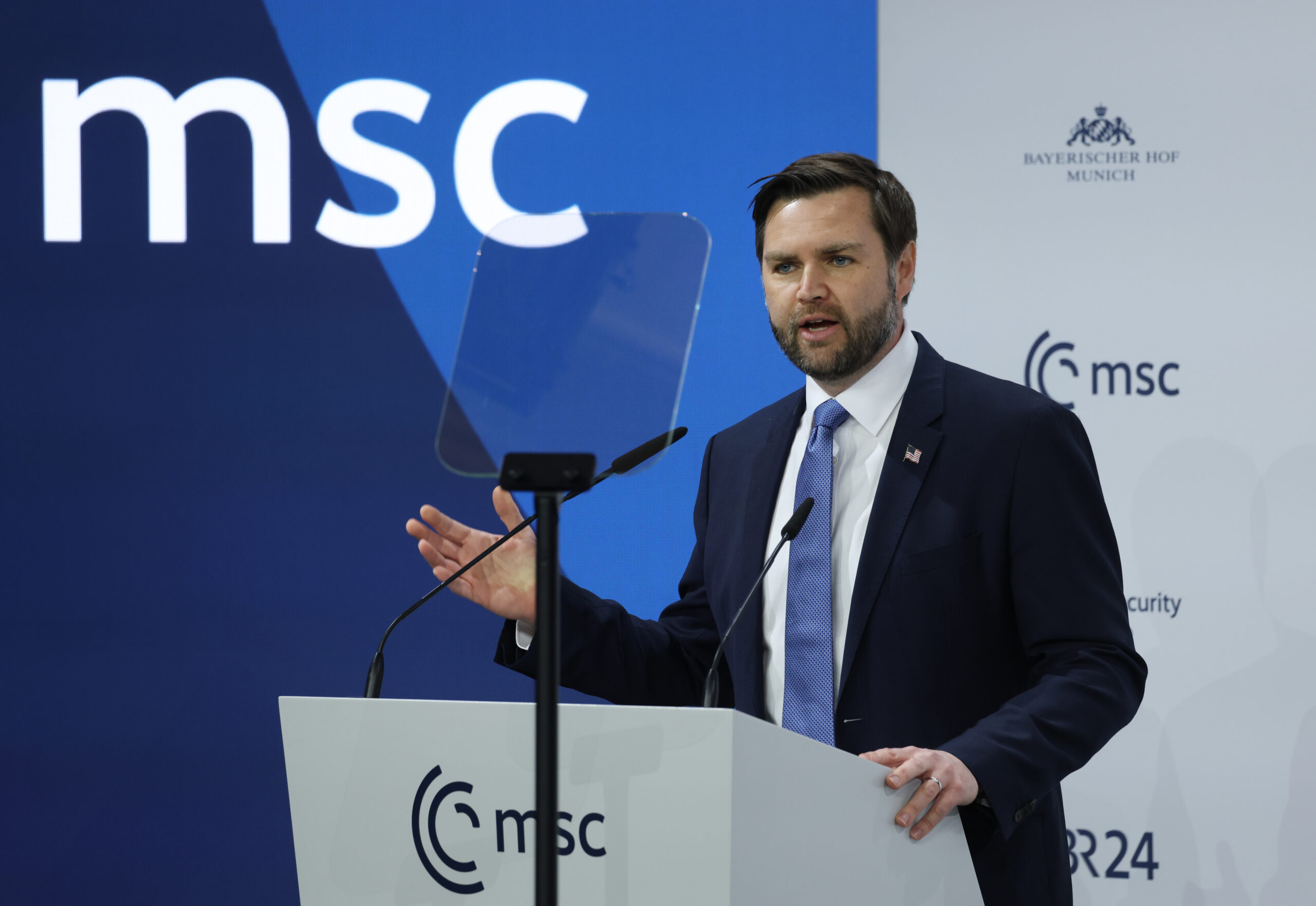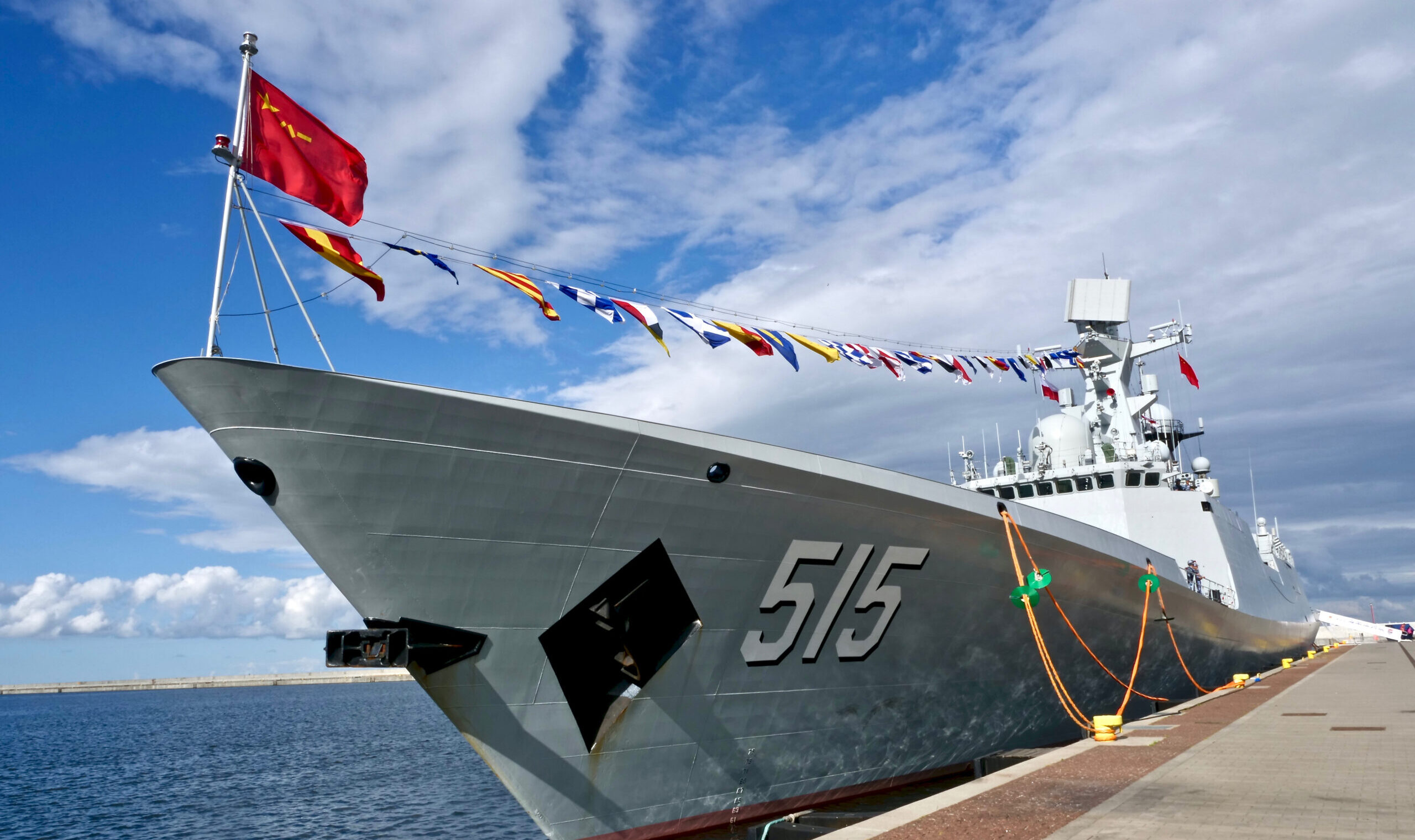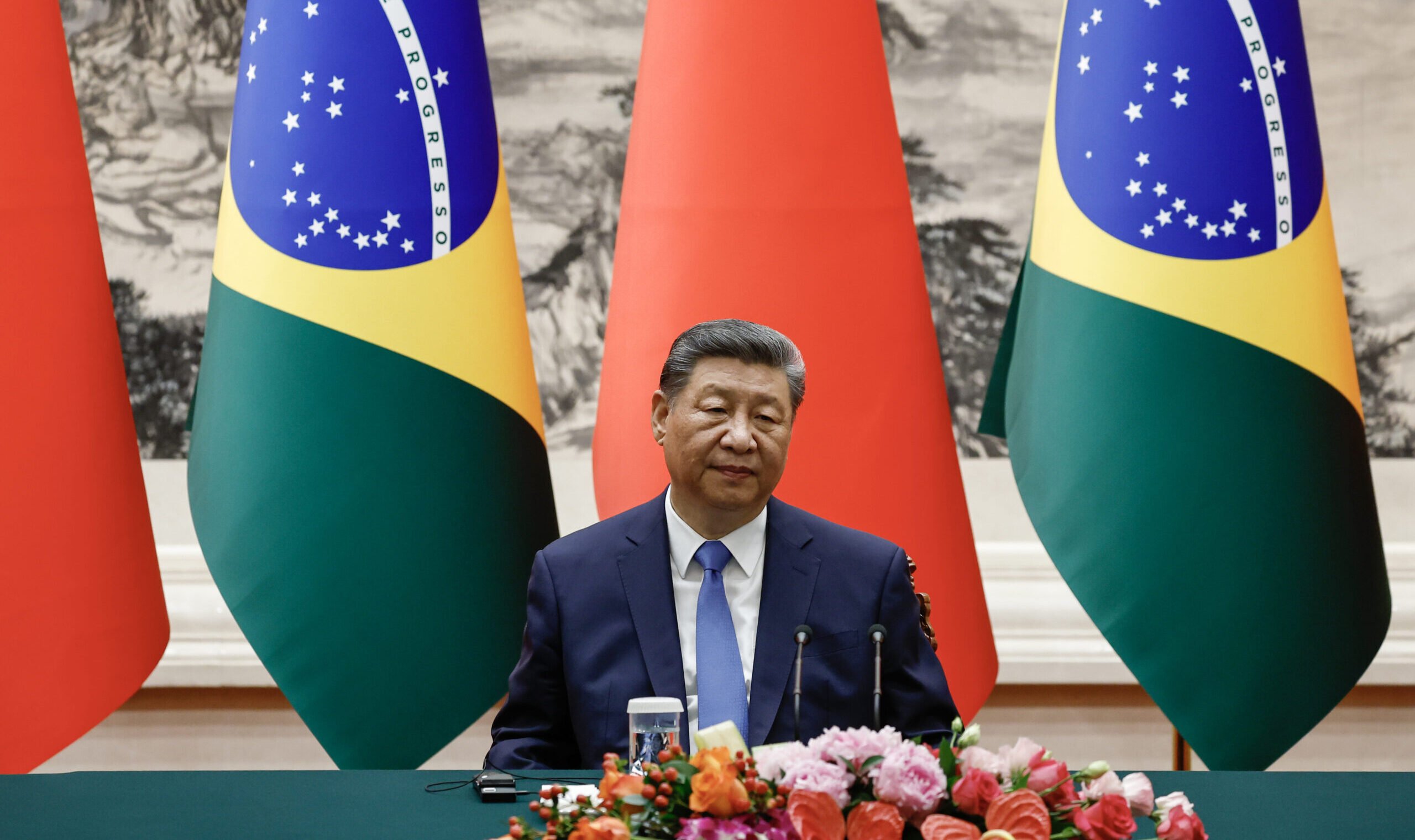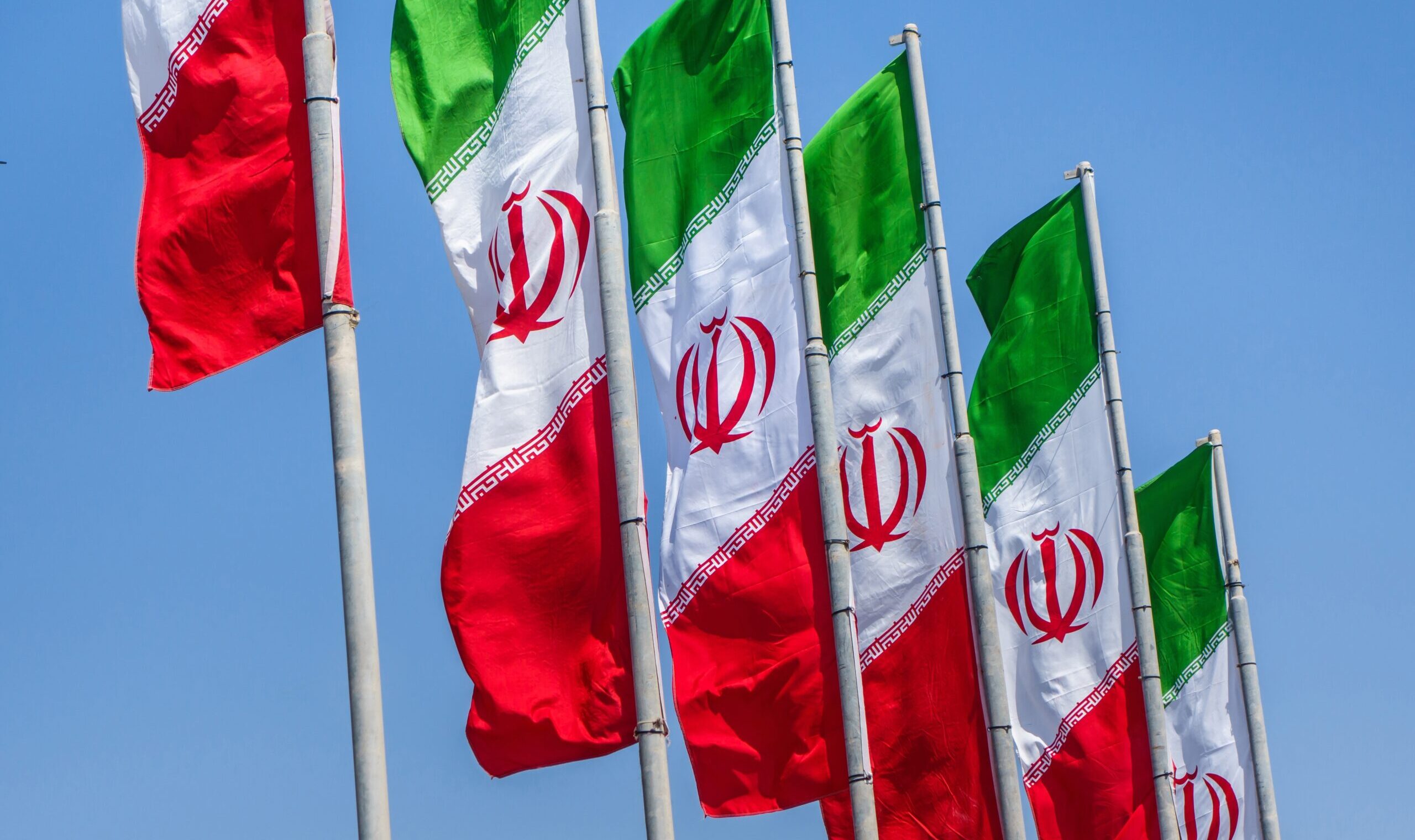
www.theamericanconservative.com
What’s Next for Europe?
Politics
What’s Next for Europe?
Scenes from three cities on a continent on the brink.
Munich in winter is mildly depressing, unlike the traditionally sunny postcards replete with lagerbier and dirndl. The airport is pretty far from the Bayerischer Hof, the venue for the 61st Munich Security Conference and, as history will record, the formal acceptance of the emergence of multipolarity and a declared shift in the grand strategy of the globe’s preponderant great power.
A few days earlier, Secretary of Defense Pete Hegseth declared that the U.S. would look to shift the burden of conventional deterrence on to the Europeans and that the days of unlimited NATO expansion, for all practical purposes, are over. Within the next two weeks, European leaders in the largest gathering of national security elites were lectured by the American vice president about how their institutions increasingly resemble those of the Soviet Union. Immediately after, the Ukrainian president, in his top crusading form, bizarrely tried to rally continental Europe against America by calling for a European army to drive out foreign invaders from the continent, and arguing that the U.S. be replaced by Ukraine in an European alliance.
The U.S. then held a separate meeting with Russia on deconfliction and arranged to turn Ukraine into a modern version of the Belgian Congo—the Ukrainians will hand over their minerals to the U.S. in lieu of the U.S. allowing them to seek a security guarantee from Europe. Germany held an election, and the new leader, Friedrich Merz, advocated for a tripartite nuclear arrangement with the UK and France, echoing calls for a European army and, among some over-excitable social media accounts, an eventual European empire. Not only was talk of imperialism coming back—the article itself was coming back, at such a rapid and disorienting pace that it almost felt as if the Earth’s magnetic poles shifted overnight.
The Uber driver from my hotel to MSC was a woman of advanced age and neurotic habits, whose opening salvo of English reminded me of Ilka Grüning’s Mrs. Leuchtag in Casablanca. We passed a Frauenkirche surrounded by niqab-wearing Balkan women, who crossed the road in large groups purposefully ignoring the green lights. I asked her by Google Translate what she thought of Alice Weidel and the rising fortunes of the Alternativ für Deutschland. After a few minutes of miscomprehension, she explained to me how her country is barely recognizable, and that she and her husband have worked for over forty years and have nothing much to show from the state. Upon further probing, she mentioned that while the Turkish diaspora still somehow work and are mostly “europeanized,” the Albanians, Romanians, and Ukrainians are hogging all the benefits, and that as a strong protest she is planning to vote—for CSU. AfD, for all its growth, has plateaued. Untamed Germany remains politically divided as ever, and the majority of right-wingers are reticent about voting in arch-Prussians who are opposed to NATO and arguably see the U.S. as occupiers.
The front of the Bayerischer Hof, surrounded by bemused young policemen and women, brought from all over Germany for the Munich Security Conference, also for some reason had a makeshift memorial with a gallery of Michael Jackson postcards. This is quintessential German conservatism stuck in the halcyon late 1980s, suffused by the Reagan glow and the Scorpions’ “Send Me an Angel.” All except one. If Germany had the late 1980s level of troops—12 divisions of the German army to start with—we wouldn’t even be having the conversation about a transatlantic rift. For all the tough talk, both Americans and Germans know, instinctively, that it is not France or the United Kingdom, but Germany that has the transatlantic special relationship. Berlin is the real prize of American hegemonic aspirations. If the U.S. has a willing partner in Mitteleuropa, European politics will continue to be equal in power but subservient in stature to American trade and security. Germany is that country: instinctively pro-American, unlike the British, without the Euro-hegemonic aspirations of the French. They are also not as tribal and imprudent as the other formerly Soviet states.
Most of NATO is not in any way a force multiplier for the U.S. America doesn’t really need Belgium or Lithuania; in fact, the more the countries in an alliance or an institution, the less the relative influence of the hegemon due to the sheer number of cooks in the democratic kitchen. By contrast, with a skilled workforce and intact manufacturing base, Germany is the competent engine of Europe. Germany is also the country least able to understand the changes that started in the U.S. since 2016. The Germans, of all Europeans, are the ones most baffled at the sudden noises coming out of the U.S., even when their foreign policy interests and mercantile instincts are aligned to Trump far more than to Joe Biden or Hillary Clinton.
Nowhere was this dynamic more visible than in the reaction of Vice President J.D. Vance’s speech at the conference. Hegseth had several days before uttered the most consequential policy sentence to come out of the new Washington leadership. In a speech to the Ukraine Defense Contact Group in Brussels, Hegseth said that not only that Ukraine was not welcome in NATO, possibly ever, but that Europe would have to bear the security burden of a post-armistice Ukraine, as the U.S. will not commit troops in any form. Then he argued for a key policy shift that everyone has been dreading: a desire to shift the burden of “conventional deterrence” to Europe. It didn’t help that within a day or two an Islamist migrant ran over a group of pedestrians in Germany.
Grim-visaged men in uniforms from the Middle East and a columnist for the Atlantic who lives in Europe were loitering in the central hall in anticipation of the VP’s speech. “Consider the side in that fight that censored dissidents, that closed churches, that cancelled elections. Were they the good guys? Certainly not”, Vance said, “to many of us on the other side of the Atlantic, it looks more and more like old entrenched interests hiding behind ugly Soviet-era words like misinformation and disinformation….” Stunned silence ensued: Caliban was enraged at seeing his face in the mirror.
For two decades, the Europeans have played a tactically smart game. Alliance literature provides ample historical evidence that alliances are almost never purely based on ethnicity, race, ideology or religion. Communism didn’t keep the peace between various communist countries or groups. Islamists kill more Muslims than others. Cardinal Richelieu famously sided with the Protestants against a Catholic power. The entire European history is one of alignments and backstabs based purely on geography and asymmetry of interest. NATO itself in its formative years had a particular Catholic dictatorship, a nation ruled exclusively by military juntas, and a power oscillating between democratic Islamism and military dictatorship; at various times and places—Suez, Cyprus, Falklands—it saw conflicting actions between its member states.
And yet, after the Cold War, the European powers internalized and propagated the idea that NATO has always been an alliance of shared values; geography had nothing to do with it. The intention was to free-ride under the American security umbrella while pretending to be morally better. But for American preponderance in the European balance of power, only a few European states are both economically necessary and strategically valuable.
“For years we’ve been told that everything we fund and support is in the name of our shared democratic values. Everything from our Ukraine policy to digital censorship is billed as a defence of democracy,” said Vance. “But when we see European courts cancelling elections and senior officials threatening to cancel others, we ought to ask whether we’re holding ourselves to an appropriately high standard.”
It sounded no different to some European ears used to American hectoring. Vance’s Munich speech “sounded very much like the same American nation-building as ever, just running with a new ideological software,” a British columnist said, requesting anonymity, “Americans just don’t understand Europeans at all.”
That is true. But given that America will not allow a Europe dominated by a single flag or army, and influence the states that truly matter to Washington, ideology or regime type be damned, the only perceivable benefit from the Vance speech was to provoke and gauge a reaction from the Europeans to see who truly cares about continuous American engagement. And they didn’t disappoint.
“Many leaders have talked about a Europe that needs its own military—an Army of Europe. I believe that the time has come. The Armed Forces of Europe must be created.” The president of Ukraine was feted at the central hall as he weirdly tried to rally Europe against the United States. The speech was bold and contradictory to the point of being absurd, a small state at war demanding protection while vilifying and threatening the hegemonic protector. “A few days ago, President Trump told me about his conversation with Putin. Not once did he mention that America needs Europe at that table, that says a lot,” he continued. “Ukraine will never accept deals made behind our backs without our involvement. And the same rule should apply to all of Europe. No decisions about Ukraine without Ukraine. No decisions about Europe without Europe.”
After demanding NATO protection, he implied that Donald Trump is tactically sided with the Russians, and demanded a European hegemony, “a common European foreign policy and (the) level of European cooperation”, to push back Washington. Within hours former Belgian Prime Minister and European Empire dreamer Guy Verhofstadt advocated for a European army, and Polish PM Donald Tusk said that Europe should be a military power in its own right.
“The possibilities of an integrated European army in the sense you lay out is zero. To me, it is a mirage, and a symbol rather than a policy goal,” Anna Sauerbrey, journalist for Die Zeit, told me. “It does not exist, firstly, for practical and political reasons. Who would be in charge? Not even the most European minded states would give up this core element of their sovereignty…. The military cultures of the 27 countries are very different, formed through centuries of unique national history. Germany’s army, for example, is a parliamentary army. It’s parliament who decides whether it is deployed. In France, a presidential democracy, it’s the president.”
One estimate made by the Belgian financial analyst Herman Matthijs suggested that in such a scenario, to offset Americans, Belgium alone would have to shell out around ten billion euros more for defense, much higher than the 2 percent NATO stipulation that they are currently supposed to spend. But trivial matters such as the defense budget or GDP didn’t dampen the online social media enthusiasm for a potential “European Army” and a federalized Europe. The EU’s foreign policy chief, Kaja Kallas, said, “The free world needs a new leader.” The former Dutch Defence Minister Kajsa Ollongren urged pivoting to a continent-wide war economy. One terminally online Dutch social media influencer and self-declared Erasmus student tweeted, echoing the sentiment of many others, “Build and buy European! American equipment is crap.”
Buda, my second stop after Munich, is classical compared to the more modern, Anglo-American Pest. I had lunch at the lovely New York Cafe, and walked up the stairs to the stunning statue of St. Stephen next to the Matthias Church, where an elderly gentleman was playing “Tyomnaya noch’” (“Dark is the night”) on an accordion—a Soviet classic written during the Battle of Kursk in 1943, where Zhukov’s “general offensive in the south” routed the German 9th Army, thus permanently destroying the tank supremacy of the Nazis and altering the course of the war in Europe—highlighting the ambivalent relationship between Budapest and Europe at a time when the Ukrainian expeditionary diversion force was being routed by Russia in Kursk.
Hungary has been the only country opposed to a continuation of the war in Ukraine from the start of the conflict, and for that Viktor Orban has paid an enormous political price. In this, Orban is unlike Giorgia Meloni, who kept her social conservative credentials intact while sidelining the Eurosceptic opponents to her right by being on the side of the Euro-American establishment on the question of Ukraine. Hungary is also unlike Poland, a country that regardless of their governance is principally guided by a monomaniacal historic animosity towards any rapprochement with the main Slavic power to her east. Orban attempted to position Hungary as a “true neutral,” a middle power at heart of Mitteleuropa, equidistant from all major power centers.
This realism is historical. It was a Hungarian from Transylvania named Urban (or, in the Hungarian spelling, Orban) who went to the Byzantines to sell what was then the most advanced artillery technology in the globe. Refused by the complacent Byzantines, Urban displayed a quintessential principle of amoral and irreligious realism by proceeding to sell his weaponry to Mehmed the Conqueror.
The Hungarians and Ottomans remained on-and-off friends for the next hundred and half or so years under both John Hunyadi and Matthias Corvinus, alternating between crusading warfare and rapprochements. Hungarians, along with the Italians, were the chief educators of the rapidly Europeanizing Ottoman elite. Ottoman court cosmopolitanism and society somehow mirrored that of Hungary and Italy, wherein the working class remained homogenous and reactionary, and the elite incorporated a somewhat race-neutral meritocracy similar to that of the Roman and the British imperial systems. That continued, as A.J.P. Taylor wrote, “The middle class, the lesser nobility, existed only in Hungary; and in Hungary the intellectuals, even if Slovak or Rumanian by origin, could become ‘Magyar’ like the gentry.” Lajos Kossuth, the hero of the Hungarian revolution whose bust is still in the U.S. Capitol, was ethnically a Slovak Lutheran.
Viktor Orban, who is a continuation of that political tradition, is facing the biggest challenge of his career. “We’re caught in the crossfire between major geopolitical players: NATO has been expanding eastwards, and Russia has become less and less comfortable with that. The Russians made two demands: that Ukraine declare its neutrality, and that NATO would not admit Ukraine,” Orban said in 2022 at the start of the conflict. “These security guarantees weren’t given to the Russians, so they decided to take them by force of arms.”
The assessment is not qualitatively dissimilar to that of John Mearsheimer, George Kennan, or Donald Trump. Within a week of Vance’s Munich speech, Orban repeated the sentiment. “Europe will be destroyed, including the Hungarian economy, and this must be stopped.” Hungary also recently became the first EU member to lose out on over $1 billion in funds due to violations of EU standards, and the EU sidestepped a Hungarian veto to unblock around $800 billion funds for Ukraine. The Ukrainian government has repeatedly tried to formally and informally push the Europeans to ditch Hungary and accept Ukraine in its stead.
Ukraine, in its characteristic style of caustic diplomacy, said that Slovakia and Hungary “shouldn’t be afraid,” that Hungary is spreading “disinformation,” and that Hungary should ensure that Russia is “kept out of Europe”, whatever that means. The intensely anti-American Volt Europa party has suggested that Hungary be stripped of her voting rights in the European Parliament. The Hungarian government in turn scolded Ukraine for failing to seek peace and for how Ukrainians have treated their large Hungarian minority population, including conscripting some of them for war.
Parts of the Fidesz elite are worried in private that Orban is isolated in Europe, and without a concerted effort from the Americans to support him against Brussels, increasingly a rival to Washington, his situation might be even more precarious. The continuity of the Fidesz project after Orban is also in question: There’s no decided bench or a charismatic heir apparent. Finally, true neutrality came at a cost, especially at a time when the world is increasingly imperial in all but name. “Forgive me, for this is the first time we are hearing similar sentiments out of an American administration on Ukraine, and we cannot seem to trust if this will be sustained or is temporary depending on who is in power in Washington,” a Hungarian state researcher told me on condition of anonymity.
With a growing economy hungry for American investment, Hungary is counting on a trade deal with the U.S. and a potential trade route between India, Italy, and the United States to balance the Chinese Belt and Road Initiative. Budapest is also interested in building a domestic military–industrial complex. If the Ukrainians and the Turks can have a growing and successful domestic drone manufacturing base, then Hungary, with a high number of STEM students and a monthly minimum wage of around $700, is ideally placed to be the drone manufacturing hub in Europe. It can serve as a pivot point for a new American approach to the European Union and Russia, if any start-up investor is looking to cut labor costs as well as dig into the growing EU domestic military research funding.
Yet any European or American investment in the Hungarian military industrial complex would be stillborn as long as Hungary seems to be economically close to China. If Fidesz’s natural allies are realist Republicans in Washington, perhaps the only way to alienate them would be to cozy up to their greatest rival returning to power in the East.
An impossibly polite Albanian-Italian student of health economics at an university in Rome, who wants to eventually move to the U.S., drove me to the Trevi Fountain. My final stop before returning to the U.S. was the Eternal City, the home of the European empire nonpareil. Giorgia Meloni, almost alone among the Europeans, is attempting to be the bridging power between the two sides of the ocean. Of all the major Western powers, Italy is often wrongly seen as the sickest economy. But it is the only economy which is truly internally resilient, and a power with a functional defense industrial aerospace and AI sector. Both Britain and the United States pride themselves on their capitalism, but Rome is the true city of small businesses, where one can find a healthy restaurant and cafe in every street corner and a table-served cup of coffee costs under $2. This guaranteed their economic survival and recovery at a faster pace post-Covid, when many small businesses in the U.S. were either shuttered or gobbled up by mega-chains during and after the shutdown and the riots of 2020.
To Anglo-American sensibilities, Meloni provides a strange template of successful right-realist diplomacy with a civilizational twist, a classic middle power hedging, so protean that it often fails to satisfy any side—but always survives. Meloni was the first leader to visit the White House after Trump won to promote trade deals. Within two weeks of the Vance speech in Munich, she was the first one to shut down the talks about sending European peacekeepers to Ukraine, all the while arguing for giving Kiev “NATO-lite” security guarantees. The geopolitical analyst Alice Carrazza commented, “Rome supports enhanced European military cooperation, but only as a complement to NATO, not as an alternative. It will remain aligned with Washington due to shared strategic interests—particularly in Africa, where security is a fundamental priority. If the European Union turns inward, Italy will look beyond.”
Meloni has positioned herself opposite Matteo Salvini and Silvio Berlusconi’s russophilia, thereby earning her a mediation credential between a panicked liberal European establishment and the rising right-realists in America. Trying to navigate that impossible position, she said that while any peace deal in Ukraine requires a security guarantee (open to interpretation), a rift between Europe and America will be fatal for Europe, resulting in war returning to the continent. After the Franco-British proposal for a “coalition of the willing” to put troops in Ukraine, Italy immediately declined; Meloni said that Italy was not interested in sending troops to police Ukraine. The current defense minister, Guido Crosetto, a former Christian Democrat who is now in the Meloni camp, said that Europe cannot have its own army, but only interoperability within the European pillar of NATO: “A single European recruitment center starting tomorrow with soldiers ready in 20 years? A European officer’s school with trained officers in five years?” Nothing else is doable.
The night before leaving Europe, I met Federico Petroni, an America-watcher and the editor of Limes, over a plate of amatriciana. “A European army independent from or built as an antagonist to the United States is a dream that Italy cannot afford to have. Italy’s existential interest is to secure freedom of navigation in the maritime chokepoints connecting its economy to world markets,” Petroni said. “This can be done only in partnership with the U.S. Navy. Betting against the thalassocracy has been done only once in the past—it ended in catastrophe.”
It can give you whiplash to see the two Romes, and consequently the two Europes: nuns praying in the place where St Peter’s bones are buried for the health of the current overseer and absolute monarch, and then walking across to the other side of Tiber, in front of the Colosseum, where Caesar’s statue timelessly, silently mocks technocracy. Ultimately both Europe and America are at crossroads because they are unable to define through which lens they should see their civilization and alliance.
Every large republic or empire throughout history has been credal in nature in some form or the other; that remains the only natural way to achieve permanent political legitimacy, unity, and endurance, just as every revolutionary force in history has been puritanical and divisive in the long term. Small republics can afford to be more homogenous and not credal, but they are then prone to external influence or often outright conquest. This contradiction was evident in both the United States and countries in a potential United Europe in the first quarter of 2025.
The European Union faces structural challenges. A continent historically never united without force of arms or conquest, it corporately desires to be an empire vicariously through America. It is unable to implement any order without American power and generosity, while often sanctimoniously lecturing America about morality, even when those values appear to be increasingly frayed, open to interpretation, and unenforceable. There is no Caesar, Charlamagne, Napoleon, or Hitler waiting in the wings. No individual country in Europe is capable of achieving martial hegemony over the entire continent, unlike America in 1945 and again in 1989.
The European Union is an artificial construct, and European peace is purely a second-order side-effect of American hegemony. American reactionaries fail to understand that the dormant divisions within Europe are constitutional, not simply intra-racial but intra-ethnic. An appeal to a pan-European identity is practically impossible; it conjures back centuries-old ethnic divisions, while simultaneously eliminating the claims of millions who are currently within European boundaries but who fall in the gray zones of those various ethnic divisions. Social conservatism couldn’t unify Hungarians, Czechs, Poles, and Slovaks—not since Russia invaded Ukraine. An appeal to geography faces another problem for an entity whose existence is predicated upon the tendency towards constant territorial expansion and recombination. Consider the Polish and French outreach to Turkey at the cost of relations with Greece and Armenia as a reaction to Russian revanchism. This brings back older Catholic-Islamic political alignments against a concentrated Orthodox power, an elite alignment explicable only through the lens of geography and not ideology, especially as Europeans are facing a simmering Islamic insurgency within.
Culture affects politics. Absent a unifying creed or applicable force, Europe’s elites have not forged a pan-European identity, but they have managed to dissolve most local bonds, as well as the relative power and competitiveness of the individual states. Germany cannot have 12 divisions in its army as it had in 1989 simply because the majority of the German Gen Zers would rather be conquered than go defend their country or their potential empire. America naturally doesn’t face any imminent European hegemony. “A consolidated European state would be a competitor of the United States, but the chance of a consolidated European state is extremely remote for the policy-relevant future, so policy doesn’t need to worry about it much”, Justin Logan, Director of Research at Cato Institute, told me as I returned to the Washington, DC.
But dark clouds gather in the horizon. Part of the risk is internal. Donald Trump won the 2024 election when an era-defining multiethnic coalition rallied to the cause of a renewed American century. That coalition itself risks now fraying due to a combination of a surge of unabashed ethnic toxicity in social media against constituent parts of the coalition and hideous public spats between tech-libertarians and paleoconservatives on economic questions, leading to organizational incompetence and occasional chaos. There is no realism or restraint here, much less any unifying optimistic narrative or exemplary conduct for the rest of the world to emulate.
On foreign policy, the implications are stark. Trump’s personal instinct to avoid conflicts in the Middle East and Europe, as well as his ideas of integrating Panama and Greenland more tightly into the American sphere of influence, are laudable. But stands in contrast with a very revolutionary and evangelical cultural stance of his administration when it comes to Europe and Canada. A golden rule of foreign policy realism dictates that any revolutionary state invites a balancing coalition. “Power begs to be balanced,” as Kenneth Waltz wrote.
While Europeans might be structurally divided about forming an actual empire, European and Canadian establishment elites are not. And they are fuming on the sidelines waiting for an opportunity to retaliate. His previous Munich appearance consolidated Vance’s position as the rational thinker and heir apparent of the realist right. This time, Vance was viewed as a combination of Napoleon and Robespierre among elite European circles—attempting to export rather than exemplify a revolution, French-style rather than American-style. While the European Union does not pose any military challenge to the American homeland, Europeans are perfectly capable of throwing their weight behind rival powers to permanently wreck American trade and dollar supremacy, even at great cost to themselves. And while Americans overall prefer Trump’s fair trade posture, there is no evidence that Americans prefer living under actual autarky. Pursuing it would turn MAGA radioactive for generations.
Finally, European conservatives, who are both ideologically aligned and geographically important, are unable to gauge whether the Trump administration would back them if they reject a potential EU empire or they would be casually ditched on a whim—or, worse, due to change of government in the United States, to suffer the wrath when the other transatlantic side is in power. Strategic uncertainty in foreign policy isn’t good for obvious reasons. And no one from the current administration has made any effort either to academically contemplate the reemerging intra-European fault lines or to make the necessary diplomatic outreach to the aligned forces. A consolidated EU, even as a trade superpower, is a civilizational danger to American prosperity and predominance. A divided Europe isn’t.
Americans hate to be hated, and therefore they institutionalized peace in the European continent instead of practicing a more workable balance of power. The result has been European free-riding and American overstretch. A better lesson for the new right in America is not replacing neoliberalism and neoconservatism with another type of evangelizing about a different set of values. Caesar in Gaul remains a pretty good template to follow. The key is to be focused, partially retrench, allowing the natural European divisions to fester; only aligning with those few who are geographically and materially important. Alliances based on values, kinship, religion or ideology are a recipe for disaster.
“Divide et impera, the reprobated axiom of tyranny, is under certain (some) qualifications, the only policy, by which a republic can be administered on just principles,” James Madison wrote about governing a large republic. It is a sound principle of foreign policy as well. Some rhetorical restraint won’t harm either.
The post What’s Next for Europe? appeared first on The American Conservative.

















 Rumble
Rumble